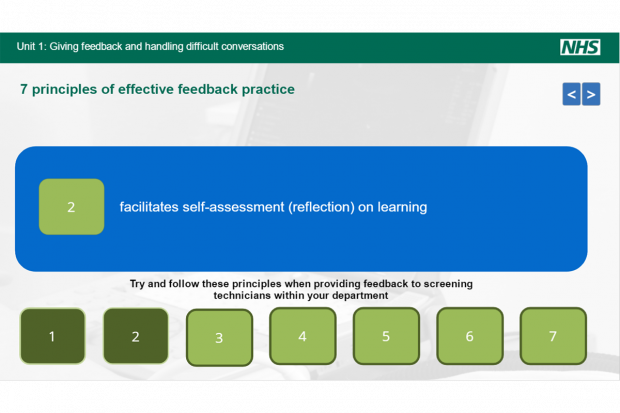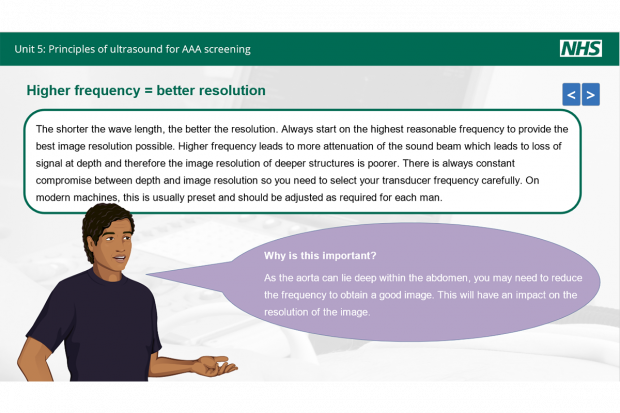
We are pleased to announce that we have refreshed and updated the 2 national e-learning units for screeners in the NHS AAA Screening Programme.
These units:
- contribute to the initial training of new screeners undertaking the Health Screener Diploma
- serve as a refresher for established screeners as part of their reaccreditation
The e-learning is hosted on Health Education England’s e-LfH Hub website.
Thank you to everyone who helped review and update the content.
What is new?
When you log on, you will see that the format is more engaging and interactive than previously.
We have retained the test at the end of each unit but changed the pass mark from 90% to 80%.
We have also updated the module for clinical skills trainers (CSTs), who are pivotal to the success of AAA screening.
Previously, trainee CSTs had to work through 7 units – now there are 5. Two of these units are the same that the screeners have to complete – including the test at the end of each.
All CSTs should use the updated module as an opportunity to refresh their knowledge of the programme and the level of knowledge and competency required of the screeners you support and develop.

Future updates
We are planning to make the e-learning units even better with the addition of a bank of possible questions for the tests and a pop-up box that tells you if the answer you have submitted is correct or not.
Brief explanations will also be included with the correct answers. Having a variety of questions every time the test is taken will stretch participants and make learning more meaningful.
Scanning assessments for reaccreditation at Salford
I, along with national programme manager Lisa Summers, receive a regular report from the assessors at the University of Salford, which is contracted to provide the scanning assessments for reaccreditation.
I have also met several screeners and received very useful feedback.
One theme that appears to recur is that of image optimisation and the use of pre-sets.
The national programme scope of practice guidance is clear that screeners need to understand how the individual image optimisation controls work in relation to image quality and basic physical principles.
It lists a number of image optimisation controls that screeners can use and must have an awareness of. These include:
- depth
- frequency
- overall gain
- time gain compensation
- focus/focal zone position
- number of focal zones
- dynamic range
- harmonic imaging
- compound imaging
- sector width
- edge enhancement
Any screeners who are not familiar with the above should ask their CST for guidance.
All screeners will be required to demonstrate they understand image optimisation at their scanning assessment for reaccreditation. This is essential for continuing professional development. It is important this level of knowledge and skill is maintained so screeners do not only rely on pre-sets and can make adjustments as necessary.
Screeners should share the individual feedback that assessors email to them soon after they have attended the scanning assessment. This will help their CSTs identify and plan for areas to focus on for their development.
PHE Screening blogs
PHE Screening blogs provide up to date news from all NHS screening programmes. You can register to receive updates direct to your inbox, so there’s no need to keep checking for new blogs. If you have any questions about this blog article, or about population screening in England, please contact the PHE screening helpdesk.